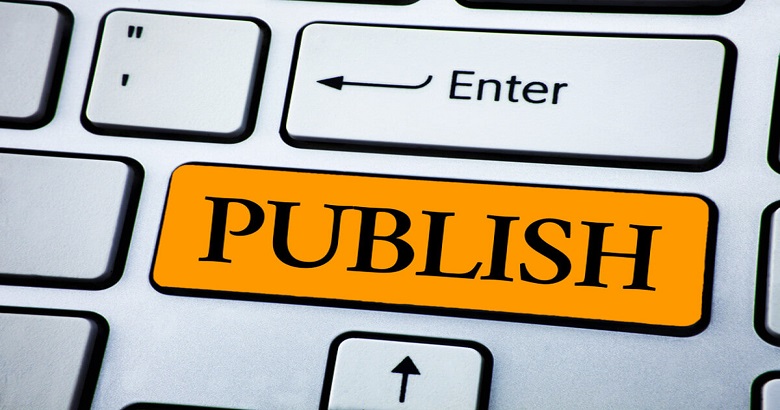Commencing the process of publishing a poetry book is a momentous undertaking for any poet. It represents the integration of ingenuity, sentiment, and commitment. Nevertheless, navigating the realm of publishing may appear daunting. We have no fear! This guide will illuminate the way from the time you begin drafting your manuscript until you grasp your published book.
Composing the Manuscript
Simplify Your Voice
- Accept and Value Authenticity: Poetically, your voice is your fingerprint. Remain faithful to it. Refrain from imitating others; instead, express your distinctive viewpoint.
- Investigate and Experiment: Experiment with various designs and forms without hesitation. You may find that experimenting with different poetic techniques enables you to convey yourself in novel ways.
Cohesion and Theme
- Select an Overarching Theme: A collection gains substance and resonance with the addition of a unified theme. Choose a personal and effective subject for your readers, such as identity, nature, love, loss, or loss.
- Establish a Storyline Arc: Organize your poems in a narrative or emotional-evoking fashion. When organizing poems in your collection, consider the flow and ensure the reader is taken on a voyage.
C. Revision and Editing
- Obtaining Feedback: Work subject to constructive criticism can be improved. You can obtain insightful feedback and recommendations by disseminating your manuscript among writing groups, trusted friends, or fellow poets.
- Strengthen Your Verses: Consider the impact of imagery, cadence, and language. Thoroughly edit your poems, ensuring every word and line is refined to lucidity and potency.
Locating an Appropriate Publisher
Traditional Publishing vs. Self-Publishing
- Traditional Publishing: Although it confers prestige and expands distribution, it demands a degree of perseverance. Research reputable poetry publishers and adhere to their submission guidelines when submitting your manuscript. Anticipate a lengthy delay, as conventional publishing procedures may exhibit a reduced rate of speed.
- Self-publishing: Provides creative control and faster publication but demands more self-promotion. If you self-publish, explore platforms like Amazon Kindle Direct Publishing or IngramSpark. Invest in professional editing, cover design, and formatting to ensure a high-quality product.
Research Publishers
- Determine Appropriate Publishers: Consider those that emphasize lyricism or whose aesthetics complement your own. Perform a catalog search to determine whether your work matches their aesthetic.
- Guidelines for Submission Reviews: Follow each publisher’s specific requirements. Please include a refined manuscript and an engaging cover letter that introduces the author and their work.
Prepare Your Submission
- Compose an Inspiring Cover Letter: Introduce yourself and your employment professionally. Emphasize any pertinent publications, honors, or professional experience. In your cover letter, indicate why your manuscript is a suitable match for each imprint and how your familiarity with that imprint will assist in this regard.
- Structure the Manuscript: Format and submit according to the publisher’s instructions. Before submitting your manuscript, verify it is error-free and compliant with industry standards.
Succeeding in the Publishing Procedure
Persistence and Patience
- Rejections Happen: Rejection letters should not dishearten you; they are a natural part of the voyage. Numerous accomplished authors encountered many rejections before stumbling upon the ideal publisher.
- Remain Consistent: Keep submitting and improving your craft. Use rejection as motivation to refine your manuscript and continue honing your skills.
Comprehension of Contracts
- Read Thoroughly: Seek clarification on any terms you don’t understand. Don’t hesitate to consult a literary agent or legal professional for guidance.
- Permit Negotiations to Occur: Do not vacillate when negotiating terms that are significant to you. Exhibit confidence when advocating for your author rights, including those about royalties, marketing endeavors, and rights.
Collaborating with Editors
- Be receptive to feedback: Your work’s objective is to improve it; be receptive to suggestions. With an open mind, approach the editing process with the knowledge that constructive criticism can enhance your manuscript.
- Sustain Creative Authority: While conveying your vision, maintain an openness to editorial feedback. Maintain a harmonious equilibrium between adhering to your artistic vision and being receptive to editorial recommendations that enhance the quality of your work.
Publication Preparation
Layout and Design of Covers
- Visual Influence: The cover of your book ought to be visually appealing and descriptive of your poetry. Collaborate with an expert designer to produce a cover that imperils consumers and effectively communicates the core attributes of your collection.
- Interior Design: Prioritize aesthetic appeal and legibility when organizing your compositions. To ensure a visually appealing reading experience, closely monitor typography, spacing, and formatting.
Promotion and Marketing
- Construct Your Author’s Platform: Author websites and social media should be utilized to engage with readers. Establish a presence on social media platforms like Twitter, Instagram, and Goodreads to promote your book and interact with your audience.
- Interact with the Audience: One can generate excitement by engaging in literary communities, hosting readings, and sharing excerpts. Develop relationships with fellow poets, bloggers, and influential individuals to increase your book’s exposure and support.
Channels of Distribution
- Investigate Diverse Channels: For distribution purposes, contemplate online retailers, local bookstores, and poetry events. Distribute advance review copies of your book to generate early interest and reviews.
- Make Use of Print-on-Demand Solutions: Select services that provide flexibility while minimizing initial expenditures. Print-on-demand services, such as IngramSpark and Amazon KDP, enable the timely production of duplicates, thereby mitigating logistical and inventory-related obstacles.
Publication of Your Poetry Book
Scheme a Launch Occasion
- Select a Venue: Choose an environment that corresponds with the mood of your poetry. One potential location for your launch event is a cultural venue, bookstore, or café well-liked by your intended audience.
- Advertise Your Occasion: Disseminate the information through invitations, social media, and local press. Capitalize on your author platform and enlist the assistance of family, friends, and fellow poets to increase attendance.
Reading and Presentation
- Establish rapport with your audience: Engross audiences by imbuing your readings with enthusiasm. Inspire the audience to participate and elucidate the sources of inspiration that shaped your poems to craft an unforgettable experience.
- Provide attested copies: Consider providing signed copies of your book to enhance the attendees’ experience. One possible approach to encouraging book purchases is to provide incentives, such as poetry broadsides or limited-edition bookmarks.
Appreciation and Collaborating
- Remain Appreciative: Express gratitude to followers, fellow poets, and all those who have helped you on your voyage. Acknowledge the organizations and individuals that contributed to the creation of your book, including family and friends, editors, and designers.
- Establish Connections with Peers: Establish relationships with other poets and writers; the community’s support is priceless. You can expand your network and foster relationships with other creatives by attending literary events, joining writing groups, and participating in seminars.
Final Thoughts
Publishing a poetry book entails sharing a portion of one’s essence with the world, not merely committing words to paper. Through meticulous manuscript crafting, astute navigation of the publishing process, and wholeheartedly embracing the voyage, one has the capacity to manifest one’s poetic aspirations. Therefore, let your words flow, your voice reverberate, and your book illuminate the literary cosmos with brilliance, cherished poet.
Frequently Asked Question
-
How long does it typically take to publish a poetry book?
The timeline for publishing a poetry book can vary greatly depending on factors such as the publishing route (traditional vs. self-publishing), the submission and editing process, and the publisher’s schedule. On average, it can take anywhere from several months to a year or more from manuscript submission to book release.
-
Do I need to have a significant following or prior publishing credits to get my poetry book published?
While having a strong author platform and prior publishing credits can certainly enhance your chances of getting published, they are not always necessary. Many publishers are interested in discovering fresh voices and compelling poetry, regardless of an author’s existing following or publication history.
-
Should I copyright my poetry book before submitting it to publishers?
It’s generally recommended to have your poetry book copyrighted before submitting it to publishers as a precautionary measure to protect your intellectual property. However, in many countries, your work is automatically protected by copyright law as soon as it’s created and fixed in a tangible form (such as writing it down).
-
What royalties can I expect to earn from publishing a poetry book?
Royalty rates for poetry books can vary widely depending on factors such as the publishing contract, sales volume, and distribution channels. Traditional publishers typically offer royalties ranging from 5% to 15% of the book’s retail price, while self-publishing platforms may offer higher royalty rates but require upfront investment.
-
How can I promote and market my poetry book effectively?
Effective promotion and marketing strategies for poetry books include building an author platform through social media and author websites, engaging with your audience through readings and events, soliciting reviews from readers and literary influencers, and exploring diverse distribution channels such as online retailers and local bookstores.





